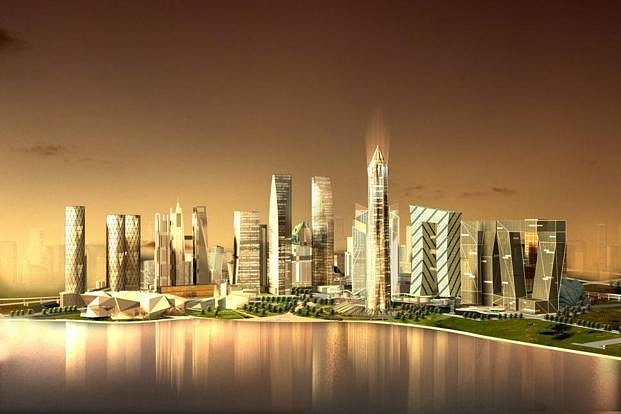
AMRUT And The Smart Cities Initiative - Possible To Fix Urban India?
The previous government spent money on urban development programs without the right incentives in place. Will AMRUT and the Smart Cities initiative be different?
The Union Cabinet recently approved central government spending worth Rs. 98,000 crore under two urban missions over five years. It provided a clearer picture of the 100 Smart Cities initiative, which will be administered through a competition, and AMRUT, the Atal Mission for Rejuvenation and Urban Transformation, for 500 cities.
While the new urban schemes are still in progress, the move towards more clarity is welcome. Their potential holistic approach to city development holds promise, and above all, the increased focus given by the central government to urbanisation can help counter perceptions of ‘rural bias’ that have pervaded India for decades, with significant negative consequences and misallocations.
The previous government’s JNNURM urban scheme supported specific urban projects, like constructing freeways and metros, and entrusted ULBs (urban local bodies) to link them with overall city plans. 100 Smart Cities, however, is a declaration of cities chosen by the government to undertake and showcase reforms. So there is hope for the government to have sufficient incentive to boost the overall performance of the city across all fronts, because this is what their performance will be judged upon.
The two schemes lend themselves to fundamentally different ways of presenting and defining success. Under JNNURM, for instance, if selected BRTS corridors were built, the government could check the box, even if the buses lay in disrepair. But there is hope that the branding and packaging of “100 Smart Cities” will present a different set of incentives. If a city chosen by this government under a flagship scheme has free public wifi but soaring pollution levels and debilitating traffic, it will be easy for citizens to deride it as being far from “smart.” And while India needs improvement in far more than 600 urban areas covered by the two new schemes, these cities can then serve as models of urban development that can spread and be emulated, while expanding the absorptive capacity and productivity of our cities.
The schemes also help shift focus on urban areas, which are being run far too inefficiently in India, and in many cases, are being governed by rural panchayats. This can have real dangers, because panchayats, unlike municipalities, do not have to regulate the construction of buildings or provide fire services, according to the 73rd and 74th constitutional amendments. So many urban areas in India (at least 3,800 if one accepts the census definition of urban, which many regard as an underestimate) are growing with the safety, economic and lifestyle requirements of urban areas, but are governed by panchayats that are structurally ill-equipped to provide them.
Many forces deter panchayats from converting to municipalities, even when areas turn from rural to urban. These include voters evading higher taxes and construction industries avoiding stricter building norms. But there are also perceptions about rural areas receiving more government funding, whether or not this is true.
For instance, in 2004, 561 Town Panchayats in Tamil Nadu were classified as Special Village Panchayats, in a move justified as a means to enable them to receive more rural funds from the central government. However, in 2006, all 561 Special Village Panchayats were reconstituted again as Town Panchayats, with reports of panchayat leaders complaining that they did not receive the additional resources that they expected from the rural classification. On the other hand, cities have been seen to expand their municipal limits to bring a larger population in their fold to improve chances of grants under the JNNURM urban scheme.
It is important to provide local governments the right incentives to adopt the most suitable form of governance, and placing urbanisation as a central government priority and a benchmark against which it can be evaluated, will go a long way in doing so.
A Lokniti survey found that 60% of farmers want their children to settle in cities, and only 19% think that village life is better than city life. So there is a tremendous need to improve the functioning of cities not only to drive economic growth, but also to meet the aspirations of Indians.
Just earlier this week, a parliamentary committee criticised the Ministry of Urban Development for ‘adhocism’ in its Smart City initiative. Months after the plan was announced, there was no clarity on what exactly these Smart Cities would be, with valid fears of there being a sole focus on technology without addressing basic infrastructure and governance issues, and announcements of selected areas within cities being labeled “smart” due to measures like “smart” parking lots, even when basic mobility and connectivity in those areas remained a problem.
The Smart City framework has been published as a working document by the government online, and in the few months of its operation, has already shown evolution of ideas to incorporate important aspects such as transit-oriented-development, increased FSI to make housing more affordable, and mixed-use development to ensure residences, offices, retail stores and recreation activities are within walking distance. If these additions to the government’s ideals and goals for Smart Cities are indicative of its willingness to adapt to advice on urban best practices, it bodes well for the growth of our cities.
Komal Hiranandani is an Associate at IDFC Institute. Views expressed are personal